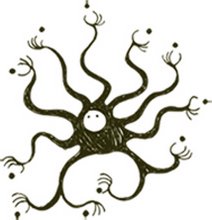In Early modern times there’s also a beginning of demographic boom on the Island. The great development of agriculture, the use of new technologies, the hospital village, caused better quality of life. From 850 ECHS the council made a list of the inhabitants.
The Years 1007 – 1642 ECHS in culture are referred as Époque of many ways. 1007 ECHS it’s a symbolic date of the final split of the three artistic villages, sort of emancipation of art disciplines in the island. The process was on up until 1642 ECHS, which is the date of publication of the legend of Enri and Suoma in modern writing system. That was the beginning of a new cultural movement, focused on the ancient legends.
Emancipation of forms wasn’t an original idea of the artists, it was the effect of the changes. It’s visible especially in the case of painters. More abstract paintings, focused on the sea, especially from 1200’s ECHS. We have a name for this sub-period, existed only in paintings as a Mother sea period.
Musicians and dancers still coexist as a cultural centre. Settling on the new villages brings a big specialisation of the inhabitants. People are concentrated on their occupation, need of knowing other perspectives and skills starts to die. Artists were always in avant-garde of the changes and in 1588 ECHS they started to organise middle-week events, focused on dances, where artists weren’t the performers. Fishermen, farmers, historians etc, played the role of the artist. The Council of the island agreed that through art, people can learn how to be more universal, more open for new things. To keep this good trend, the council decided to add a new law, later known as §2. Everybody has a right to dance, where “dance” was only metaphor of opened mind. This was a first step to big civilisation changes caused by technological boom, also by the inspiration for educational system reformation.

No comments:
Post a Comment